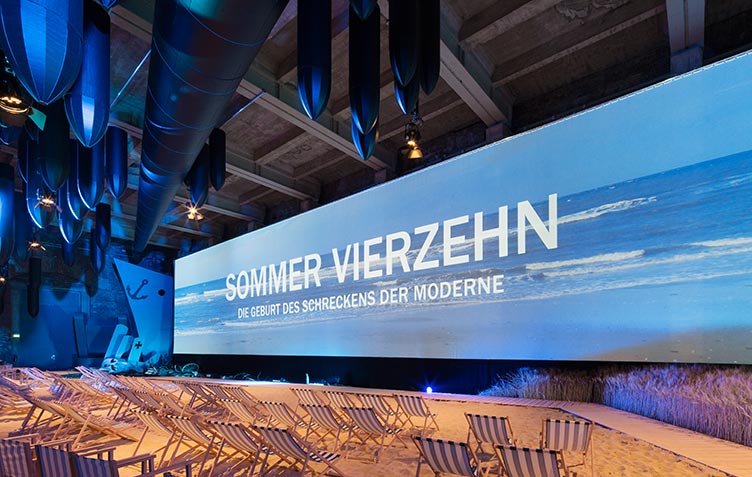
Until the institution closed for renovations at the end of 2020, more than 300,000 guests a year were visiting the Documentation Center at the Nazi Party Rally Grounds in Nuremberg. Following an opening boom in the first year of operations (230,000 visitors in 2002), attendance initially settled in at a still-high 170,000 (2003). The facility had originally been planned for only a hundred thousand visitors a year. But figures continued to rise steadily, so that by the summer of 2020 the grand total had risen to more than four million people.
About 50 percent of these visitors had come from other countries. The largest contingent came from English-speaking regions, primarily visiting Nuremberg on river cruises. A majority of these visitors were from the United States, followed by Britons, Australians and Canadians. European countries outside Germany contributed another large interested cohort, especially France, Spain and Italy. But really, people came to Nuremberg from all over the world; the statistics include addresses from the Fiji Islands to Arab lands and East Asia.
At the Study Forum and on the grounds, the educational staff has taught 23,000 courses to more than 560,000 visitors since the institution opened. Site tours alone have hosted more than 12,000 groups. The Documentation Center's team has organized a great many large events, including international professional conferences and meetings of European ministers of education, UNESCO and the German Museums Association.
The Documentation Center itself has presented more than thirty exhibitions to date. It has had its own exhibition hall since 2004. Among the highlights in terms of both content and design we can certainly mention the institution's own exhibitions "The Burden of Images: Franconia under National Socialism" in 2008; "The Track. The Logistics of Racial Mania" in 2010; and "Robbed of Rights. Robbed of Dignity. Robbed. ‘Aryanization' in Nuremberg and Fürth" in 2012. The multimedia installation "Summer of '14: The Terror of Modernism Is Born," with panoramic projections, took an entirely new approach to communicating its subject, while "Albert Speer in the Federal Republic" in 2017 and "The Nazi Party Rally Grounds in World War II" in 2019 presented the latest research in impressively designed settings. Another major draw was "Seduced, Abused and Sacrificed – The Short Life of Nuremberg Hitler Youth Paul B.," a touring exhibition produced in-house that appeared in multiple languages at museums in the United States and France. The institution's own "Racial Mania" show, in 2009, was the first German exhibition to appear at the Auschwitz-Birkenau Concentration Camp Memorial.
The Documentation Center hopes to continue this record of successful work, not only with its current Interim Exhibition, but with the new Permanent Exhibition that is scheduled to open at 2026.



